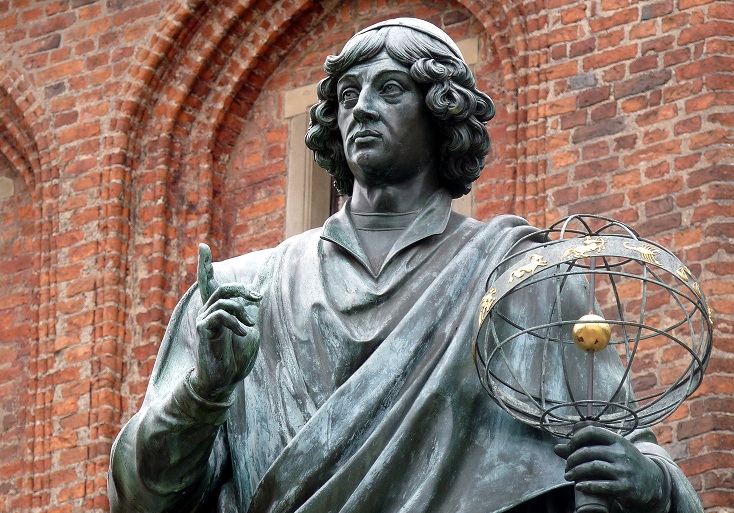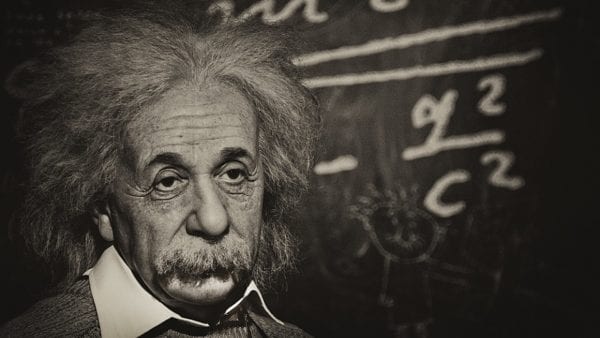In Greek, the word neos means “new.” In English, the prefix “neo” generally refers to something that is new, revived, or newly refreshed. We have compounds such as neo-classic, neo-Darwinism, neo-Nazis, neo-Hellenism, neo-Platonism, neo-orthodox Mormons, and more.
While Neo-Mormons might refer to Mormons who take a new or modified approach to Mormon matters, for the purpose of this post Neo-Mormons refer to those who compare their exit from Mormonism to the character in the fictional movie, The Matrix.
For those who haven’t seen the movie, Keanu Reeves plays the character of Thomas Anderson, a computer programmer and infamous hacker known as “Neo” (the name by which he is known throughout the movie). Morpheus, another infamous hacker (who is almost as much myth as legend), contacts Neo to warn him that his life in danger.
After meeting face to face, Morpheus explains that the world in which Neo lives is not “real” but offers Neo the opportunity to transition to the real world. Neo can either swallow a red pill which will extract him from the “Matrix” (the computer-generated world in which he lives) or he can choose to swallow the blue pill which will cause Neo to wake up in his bed at home, forgetting the entire conversation and everything about the Matrix. If he takes the red pill, he could never go back to the way things were. If he takes the blue pill, he could be happily ignorant to reality. Neo takes the red pill, wakes up in the “real” world and discovers that the Matrix was a world of little more than digital smoke and mirrors.
Neo’s red pill vs. blue pill dilemma has frequently been commandeered by former Mormons in their attempt to explain their new perspective of reality once they left Mormonism. According to several ex-Mormons, they, like Neo, were confronted at some point with information that caused (or even forced) them to choose between the red pill and blue pill. In every case in which I’ve seen the analogy used, the former (or teetering) member took the red pill. They became “enlightened,” and discovered the “truth,” or “reality” of Mormonism.
This new enlightenment allowed them, like Neo, to see (sometimes for the first time) truth with eyes wide open. That truth, they claim, destroyed the untruths found in Mormonism and exposed it as a man-made institution sitting on a continuum somewhere between an evil enterprise and a well-meaning assembly of honorable but gullible dupes.
While I understand that there is no such thing as a perfect analogy, I think the Neo Mormon/Matrix analogy falls flat. First, the red pill vs blue pill analogy implies that ex-Mormons are not only open to the truth but can see the truth, while believing Mormons stick their heads in the sand (taking the blue pill) and don’t want to see the new information that comes with taking the red pill.
The fact is, however, that myriad of LDS scholars, lay members, and believing students of Mormonism, are equally as informed about the supposedly troubling Mormon information. Despite seeing this same information they still accept the prophetic calling of Joseph Smith and the continuation of modern prophets today. There’s no hiding of heads in the sand, no rejecting the red pill because they don’t want to see allegedly challenging issues. The eyes of informed Latter-day Saints are at least as wide open to all the same information as any critic.
Secondly, the new information doesn’t automatically destroy basic Mormon beliefs. Taking the red pill does not automatically prove that Mormonism is false. While some people may find the critics’ interpretations of the data to be convincing, such interpretations are not the automatic definitive conclusions to understanding the data. To insist that there is only one way to interpret the data is naïve and sophomoric. There are no slam dunks proving nor debunking Mormonism. There is only evidence, and evidence must be weighed.
Thirdly, everyone assumes they are “right.” We have reasons for our beliefs. Those reasons may not be transferrable; they may not, for example, convince others, even when they make sense to us. The fact is—and a growing number of studies bear this out—intellect alone does not impel humans to believe or disbelieve. In other words, despite the ridicule by some critics who claim that believers rely on “feelings” while they (the critics) rely on reason, the simple fact is that all people’s beliefs are influenced, at least to some degree, by “feelings.” No human is a purely rational creature.
Differences in religious opinions and beliefs are not anything like what we might imagine with a fictional Neo-Mormon who takes the red pill and a believing Mormon who takes the blue pill. Instead, the differences are much more akin to what we find among people who embrace divergent political views. If you are a staunch Democrat it doesn’t mean that you’ve taken the red pill—that your eyes are wide open—and that Republicans have swallowed the blue pill. If you are a staunch Republican, you are not seeing reality while your Democrat friends hide their heads in the sand. Some members of each party may like to think that’s the case, but it isn’t.
Lastly, we run into the problem of changing minds. Just as some Democrats become Republicans and some Republicans become Democrats, some members go through periods of disbelief, doubt, and possibly even separation from Mormonism. I have a couple of friends who have been married to the same spouse several times. They get divorced, then remarried, more than once—each time to the same person. Some members or former members seem to have a similar relationship with the Church. They are members (perhaps from birth), then leave the church over “troubling” issues, then return because of spiritual or intellectual resolution, then leave again over spiritual or intellectual quandaries, and so forth.
In which phase of their change can they claim to be the surest of their beliefs? Obviously, it would be the most current phase. They can look back and tell themselves that in their earlier phase they were duped, but this time they got it right. The problem is, however, that we all tell ourselves this same story (it’s a form of confirmation bias). Studies show that our memories of the past are influenced by our present selves—in other words, we can’t accurately remember how we felt about our past situation because we can’t escape our current situation.
As I’ve matured in life, wisdom, and Gospel understanding, I’ve had to modify paradigms many times—rejecting those things that I’ve found to be weak, and embracing those things which I’ve found to be strong. It would be foolish of me to think that I’ve reach a zenith—that I’ve reached a point where I’m right about everything I reject, and never wrong about everything I accept. I’m among those who has seen all the details supposedly hidden in the Matrix. I’ve seen the same data which allegedly is revealed to those Neo-Mormons who swallow the red pill. And yet, I believe.
For me, the same data that causes some members to falter simply illuminates the world I already knew. I absolutely had to modify my worldview by absorbing new facts, rejecting common myths, and by recontextualizing some of the things which didn’t seem to fit my previous world-view (which, by the way, is the same modification process we find in the evolution and revolution of scientific paradigms). From my current perspective, however, I find that most of the data fits comfortably within a framework that I embraced.
While I like to think that my eyes are opened wider with every new bit of data, I’ve found that new discoveries haven’t forced (or enticed) me into rejecting Mormonism as a mirage, a fabrication, or a Matrix of human creation. And just because someone else comes to a different conclusion than my own (based on the same data) doesn’t mean that they are more correct, that they’ve swallowed the red pill while I swallowed the blue pill, hid my head in the sand, and simply ignored conflicting information.
From a Matrix analogy, I don’t think that there are any real Neo-Mormons. There are no red pills and blue pills which ultimately expose or conceal the truth. As both science and religion tells us, we are all related and part of something greater than our individual selves. All humans are very similar—including the fact that we are faced with similar cognitive, physical, psychological, and emotional challenges and strengths— and we are also all unique in interesting and complex ways.
This, to me, is what makes God’s plan—as expressed in the LDS faith—so appealing. It’s impossible for you to fully know me, or me to fully know you. We can’t escape our own heads, or our physiological influences or impediments. We can never fully know when we are the ones who are doing the “acting” or when we are being “acted upon” (2 Ne. 2:14).
We are told not to judge others (outside of specific instances involving ecclesiastical or legislative authority) because we are not only weak ourselves and influenced by too many factors to be good judges, but because we cannot know all the factors involved in someone else’s choices. Only God knows. He knows why we do the things we do, say the things we say, and make the choices we make.
While some of those who have left Mormonism (or who consider leaving Mormonism) believe that they can see reality, the truth is that their eyesight is no better than that of believers. Their logic and reasoning is no better than that of believers. And they certainly are no more open to the “truth” because they decided to reject Mormonism, than those who accept Mormonism. Swallowing the red pill simply means that you consciously chose to reject Mormonism because of how you interpret the data. Swallowing the blue pill means that you consciously chose to accept Mormonism because of how you interpret the data.
If there is an analogy to be made with the movie The Matrix it is this: If we believe that a rejection of Mormonism automatically comes with seeing the ambiguities in Mormon history or the scriptures—that the data automatically compels the intellectually honest to reject the LDS faith and that the data cannot be honestly accepted as consistent with LDS faith claims—then we are believing in an illusion and we are still trapped in the Matrix.
—
Michael R. Ash is the author of: Of Faith and Reason: 80 Evidences Supporting The Prophet Joseph Smith. He is the owner and operator of MormonFortress.com and is on the management team for FairMormon. He has been published in Sunstone, Dialogue: A Journal of Mormon Thought, the Maxwell Institute’s FARMS Review, and is the author of Shaken Faith Syndrome: Strengthening One’s Testimony in the Face of Criticism and Doubt. He and his wife live in Ogden, Utah, and have three daughters.






